The Gold Foundation Plaque of Darius the Great is a remarkable artifact that offers a glimpse into the grandeur and sophistication of ancient Persia. Unearthed decades ago during the excavations of the Apadana Palace in Persepolis, Iran, these plaques were carefully preserved in stone boxes alongside silver counterparts and coins, acting as a time capsule from one of history’s most illustrious empires. Today, these treasures are housed in the National Museum of Ancient Persia in Tehran, where they continue to captivate historians, archaeologists, and art enthusiasts alike.
Follow archeology.dulichvn.net to learn more about mysterious artifacts.
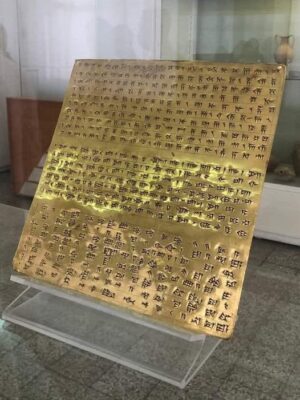
Discovery of the Gold Foundation Plaques
Excavations at the Apadana Palace
The Apadana Palace, one of the most magnificent structures in Persepolis, was a testament to the architectural and cultural achievements of the Achaemenid Empire. During archaeological digs at this site, researchers discovered two gold and two silver plaques buried in stone boxes. These artifacts, along with ancient coins, were intentionally placed as part of a ceremonial foundation deposit to commemorate the construction of the palace.
Purpose of the Plaques
The plaques were inscribed in three languages—Old Persian, Elamite, and Babylonian—reflecting the multilingual nature of the empire under Darius the Great. These inscriptions highlight Darius’s accomplishments, his divine mandate, and the vastness of his empire. Such plaques served as symbolic markers of the king’s authority and the sacredness of the construction process.
Preservation and Historical Significance
The deliberate burial of the plaques ensured their preservation for centuries, shielding them from natural and human-made destruction. Their discovery provides critical insights into the Achaemenid Empire’s administration, religion, and cultural practices, making them invaluable to the study of ancient Persia.
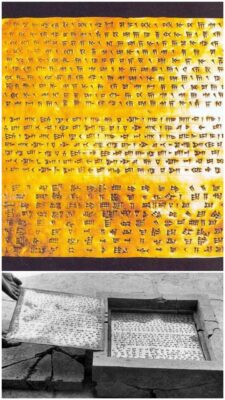
Details of the Gold Foundation Plaques
Material and Craftsmanship
The gold plaques demonstrate the exceptional craftsmanship of Achaemenid artisans. Each plaque features detailed inscriptions and a polished surface, showcasing the sophistication of Persian metallurgy. The accompanying silver plaques add to the set’s significance, reflecting the use of precious metals in royal ceremonies.
Inscribed Messages
The inscriptions on the plaques are a testament to Darius the Great’s vision and leadership. They recount his lineage, his right to rule, and the construction of Persepolis as the empire’s ceremonial capital. The trilingual inscriptions emphasize the inclusivity and administrative efficiency of the Achaemenid Empire, which encompassed diverse cultures and languages.
Coins as Time Markers
The gold and silver plaques were buried alongside ancient coins, which served as time markers for future generations. These coins, stamped with images of rulers and symbols of power, further authenticate the historical context of the plaques and provide a timeline for the Achaemenid period.
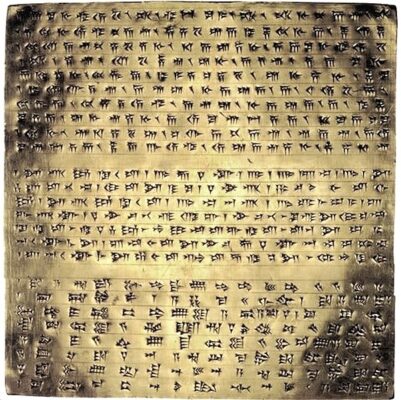
Current Location and Legacy
National Museum of Ancient Persia
Today, the gold and silver foundation plaques are displayed at the National Museum of Ancient Persia in Tehran. This esteemed museum is home to countless treasures from Persia’s rich history, offering visitors an unparalleled opportunity to connect with the legacy of Darius the Great and his empire.
Symbol of Persian Heritage
The plaques stand as a symbol of ancient Persia’s grandeur and enduring influence. They represent the Achaemenid Empire’s commitment to cultural preservation, architectural innovation, and effective governance, which have left a lasting impact on world history.
Global Interest and Research
These artifacts continue to attract global interest, inspiring ongoing research into ancient Persian history. Scholars and archaeologists study the plaques to uncover more about the empire’s political structure, artistic achievements, and religious practices.
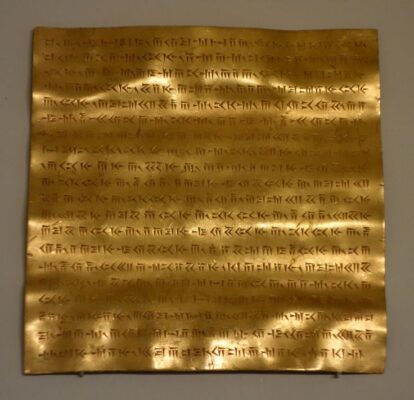
The Enduring Significance of the Gold Foundation Plaques
A Window into Ancient Persia
The gold foundation plaques of Darius the Great provide a unique window into the Achaemenid Empire, offering insights into its ruler’s vision, administrative systems, and cultural richness. They highlight the empire’s advanced craftsmanship and its ability to integrate diverse cultures under a unified rule.
Preservation of History
The careful burial and subsequent discovery of these plaques underscore the importance of preserving historical artifacts. They remind us of the meticulous efforts ancient civilizations made to document and safeguard their legacies.
Inspiration for Future Generations
As symbols of resilience and ingenuity, the gold plaques inspire admiration and curiosity. They encourage the exploration of history, fostering a deeper appreciation for the contributions of ancient Persia to human civilization.
See more: Door 275 Years Old! A Hidden Gem in the Cotswolds, England
Conclusion: Timeless Treasures of Darius the Great
The gold foundation plaques of Darius the Great remain timeless artifacts that bridge the past and present. Unearthed from the ceremonial heart of the Achaemenid Empire, they tell a story of ambition, cultural harmony, and artistic excellence. Displayed at the National Museum of Ancient Persia in Tehran, these plaques continue to illuminate the grandeur of ancient Persia, ensuring that the legacy of Darius the Great endures for generations to come.

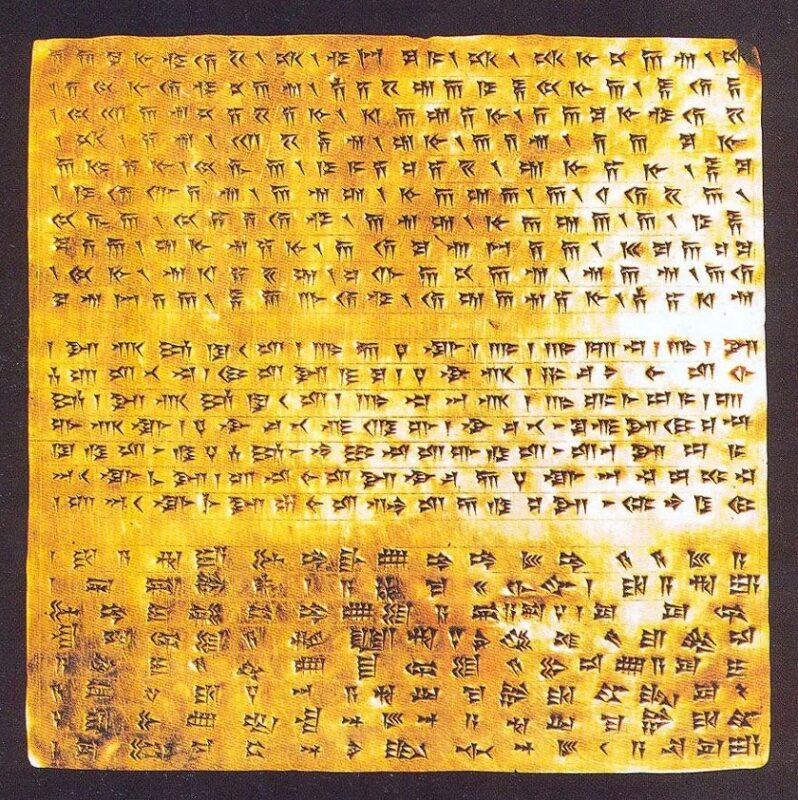
CÁC TIN KHÁC
Mary Walton: The Forgotten Inventor Who Helped Clean Up America’s Cities
Tomb of Queen Nefertari in the Valley of the Queens, Egypt
Discover the Hypostyle Hall of the Temple of Hathor at Dendera
Venus de Losange: Unveiling the Mystery of a 20,000-Year-Old Paleolithic Icon